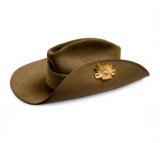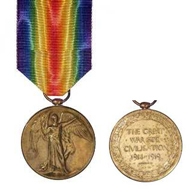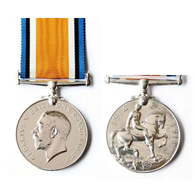McNELLEE (McNELLIE) Edward Pritchard
-

- 5436
- Private
- 12 Battalion
- 42 Battalion
- Nambour (Poona)
- Yes
- 24 August 1897
- Nowra district, NSW
- 10 January 1916
- SS Hawkes Bay
- 20 April 1916
- Sydney
-
Family
John McNeilly, born on New Years Day in 1859 at Shoalhaven to James and Mary, married Louisa Jane Carter at Cambewarra in the Nowra district of NSW on 26 June 1877. They were to have eleven children between 1878 and 1904 - six boys and five girls: Elizabeth Ann, James William, John, David Sylvester, Louisa Jane, Christopher, Alice Matilda, Isabella May, Edward Pritchard, Madeline, and Hamilton Steven. Over the years at registration, the spelling of their surnames varied in a phonetic approximation of the name they inherited from their father.
Edward Pritchard McNeilly was born to John and Louisa Jane (nee Carter) McNeilly in the Nowra District of New South Wales on 24 August 1897.
In the Census for England and Wales in 1901, Ada Alice Bartlett was one of seven children living with her parents, Jesse and Eliza, at Ashton Keynes, Wiltshire. Her father was an agricultural labourer. Ada was a scholar, aged 11 years. She would marry Edward in 1918.
Enlistment
Edward Pritchard "McNellee" enlisted at Brisbane on 10 January 1916. He declared his age as 21 years 4 months and occupation as farmer. In fact his age was only 18 years and 4 months. He was 5 feet 8 inches in height, weighed 160 pounds, of dark complexion, with brown eyes and black hair. His religion was Church of England. He recorded his father, John McNellee of Possum Creek, Richmond River, as his next of kin. His Service Number was 5436.
Military Context
The 12th Battalion was among the first infantry units raised for the A.I.F. during the First Wold War. Together with the 9th, 10th and 11th Battalions, it formed the Australian 3rd Brigade. The 3rd Brigade was the covering force for the ANZAC landing on 25 April 1915 and so was the first ashore at around 4.30 am. The 12th Battalion served at Anzac until the evacuation in December.
After the withdrawal from Gallipoli, the 12th Battalion returned to Egypt and, in March 1916, sailed for France and the Western Front. From then until 1918 the battalion took part in bitter trench warfare. The battalions first major action in France was at Pozieres in the Somme valley in July 1916. After Pozieres, the battalion fought at Ypres in Flanders and then returned to the Somme for winter.
In 1917 the battalion took part in the brief advance that followed the German Armys retreat to the Hindenburg Line. The battalion subsequently returned to Belgium to participate in the offensive that became known as the Third battle of Ypres. In March and April 1918 the battalion helped stop the German spring offensive, and later participated in the great allied offensive of 1918, fighting near Amiens on 8 August. This advance by British and Empire troops was the greatest success in a single day on the Western Front, one that German General Erich Ludendorff described as the blackest day of the German Army in this war.
Military service
On 12 January 1916, Private McNellee joined the 11th Training Depot in Brisbane but, on 9 February, was allocated to the 1st Reinforcements for the 42nd Battalion. However, the deployment of men was fluid and, on 3 April, he was again transferred - to the cadre of Reinforcements for the 12th Battalion.
Private McNellee embarked at Sydney aboard SS "Hawkes Bay" on 20 April 1916 bound for England.
On 9 August 1916, Private McNellee proceeded from Perham Downs to France. He was taken onto the operational strength of 12th Battalion on 23 August but his service was to be fraught by illness. Half of his remaining 697 days of service (life) would be spent in hospitals to the rear.
On 14 October he presented to the 3rd Field Ambulance and was subsequently admitted to the 10th Stationary Hospital at St.Omer with chaffed thighs. He did not rejoin his unit until the 3 November.
On 15 March 1917, he was again indisposed, this time with rheumatism. He presented again to the 3rd Field Ambulance and then the 3rd Casualty Clearing Station at Puchevillers. His condition deteriorated to rheumatic fever and, on 24 March, he was admitted to the 3rd Stationary Hospital at Rouen. He was not classified fit for return to duty until 8 April when he was discharged to the 1st Australian Division Base Depot at Etaples. He rejoined his unit on 1 May.
Private McNellee's return to duty was short-lived. On 13 May, his feet were so seriously blistered as to require his attendance again at the 3rd Field Ambulance and, in turn, the 5th Divisional Rescue Station. He did not re-join the 12th Battalion until 30 May.
On 8 June, he had an episode of minor indiscipline. He was absent for 20 minutes without leave from a Tattoo Roll Call for which he was issued 120 hours of No.2 Field Punishment.
On 14 July 1917, he was obliged to attend Hospital again. At the 56th Casualty Clearing Station, his condition was suspected as gonorrhoea and he was transferred to the 39th General Hospital at Le Havre. He was hospitalised for a period of 99 days. He was discharged to the Base Depot and then to his unit in the field on 22 November. He had been absent from his comrades in arms for more than four months, and he re-joined them in the depths of winter discomfort.
On 22 December 1917, he was ill with tonsillitis and presented to the 1st Casualty Clearing Station at Chocques. His general physical condition must have been debilitated because he was not fit for discharge to duty until 13 February 1918. His long periods of absence from frontline action did not disqualify him from consideration for leave and, on 4 March, he proceeded to the United Kingdom.
His return to England was not an opportunity to be missed. Edward married Ada Alice Bartlett on 18 March 1918 at St Mary's Church of England, Purton in Wiltshire. They had probably met during Edward's posting at Perham Downs before his deployment to France. She was living at Hillside, Ashton Keynes near Cricklade in Wiltshire. He returned to France on 26 March but within days was in hospital for a week with a condition suspected to be scabies/dhobi itch (or "crotch itch").
On 11 April 1918, he again presented to the 3rd Field Ambulance and 20th Casualty Clearing Station at Gezaincourt with a more serious concern, initially suspected to be small pox. At the 25th Stationary Hospital in Rouen, the disease was diagnosed as the more common and less serious chicken pox but he was still hospitalised until the 4 May. He rejoined the 12th Battalion in the field on 15 May. He had been married for less than two months and been with his bride for just one week of that, but he was beginning the last ten weeks of his young life.
On 20 July 1918, he was wounded in action. He suffered shrapnel wounds to his left side, with severe penetration of his chest and thigh. The 3rd Field Ambulance which had seen him frequently came to his aid again, but this time there would be no recovery. He was transported to the 1st Australian Casualty Clearing Station at Wavrans where he died on 21 July - just short of his 21st birthday.
His body was interred in the Longuenesse Souvenir Cemetery, St. Omer, about 45 kilometres south east of Calais.
After Edward's Death
On 27 August 1918, the A.I.F. at Horseferry Road in London wrote to Base Records in Melbourne to clarify the situation regarding Edward's Will. His last Will, written on 13 July 1917, was in favour of his mother, Louisa McNellee, at Possum Creek, via Bungalow, Richmond River, NSW. However, by virtue of Edward's marriage to Ada Bartlett on 18 March in Ashton Keynes, the last Will was revoked.
Ada McNellie took delivery of a small parcel of her husband's personal effects on 21 October 1918. Without the need to rely on shipping to the opposite side of the world, the delivery achieved by the A.I.F. Kit Store in Greyhound Rd., Hammersmith, was remarkably short. The system did not work entirely without hitch, however, because a more substantial package of the soldier's effects was despatched to Australia on the "Austral Crag" for delivery to his next of kin, which had not been adjusted on all records to reflect Edward's recent marriage. The parcel comprising scissors, cigarette case, wallet, photos, fountain pen, two small books, cards, letters, one religious ornament, three razors in one leather case, one cloth badge, one Letter of Remittance from the ANZ bank - was returned to his wife at Park Place, Ashton Keynes, in due course per the "Australglen".
On 21 July 1919, contributions to In Memorium Roll of Honor in the Northern Star (Lismore) were made by Edward's parents and several by siblings. Four poems were offered:
He gave his life for his Country, For Honour, faith, and right With us his memory every lives, he fought a noble fight. Midst the roaring of the battle, And the rain of shot and shell Fighting for home and Country, He like a hero fell. God called my darling son from the cruel battlefield, Leaving a mothers broken heart this world can never heal. Forget not those who died, When peace has reigned once more, Remember still that lonely grave Beyond that foreign shore. Inserted by Parents and his brother
Your death has made us sad, dear brother, We are sorrowed by your fall, But you died an Australian soldier, Tis the grandest of all. Inserted by sister Louisa Blewitt
He left his home in health and strength, To answer his Countrys call: He gave his best, he gave his life, For me, for you, for all. Inserted by sister Isabella Carter
A lonely grave in France, Where a brave hero sleeps, Theres a home in Australia, Where a sister sits and weeps. He has borne his cross, he has gained his crown, Though he lies in a far-off grave, And we think of his life duty done Manly, unselfish and brave Inserted by sister Madeline
On Friday 29 August 1919, the "Nambour Chronicle" reported on celebration of Arbor Day at Poona school one week earlier. Two trees were planted to the memory of Privates W. Parker and E. McNellie, both of whom have made the supreme sacrifice".
Ada McNellie received the Memorial Scroll and Plaque, the British War Medal and the Victory Medal. It is sad to reflect on the possible emotions of Edward's mother in Australia. Her rights to momentos of Edward's sacrifice would probably have been limited to the Mothers badge. All else passed to the daughter-in-law she had never met.
In 1930, Edward's parents, John and Louisa, were recorded at McGoogans Lane, Mullumbimby, a town in the Northern Rivers District of New South Wales. John had ceased to be employed. In 1936, they had moved to Eumundi in Queensland and were residing with their daughter Isabella Carter and her family.
John McNeilly (McNellie), aged 80 years, died on 18 August 1939, weeks before the outbreak of another World War that would have caused him to grieve anew the death of his boy in the "War to end all Wars". He was buried in the Nambour General Cemetery. His widow Louisa survived him by two years and she died, aged 79 years, on 9 September 1941. She too was interred in the Nambour General Cemetery.
Edward's widow, Ada, aged 88 years, died in 1978 in Ashton Keynes, Wiltshire. Edward had predeceased her by 60 years.
Of Edward's brothers and sisters -
Elizabeth Ann (1878-1881) died as an infant
James William (1880-1926) and Mary Fairhall (nee Carter) McNellee
John (1881-1960) and Sarah Ann (nee Webb) and son William Edward Webb McNellie, AER 1954, farmer, Cawongla via Kyogle, NSW
David Sylvester (1883-1975) and Alice (nee Sergeant) MacNellie , AER 1968, farmer, Little Mountain, Caloundra, Qld
Russell and Louisa Jane Blewitt (1885-1970), AER 1958, labourer, Granuaille Rd., Bangalow, NSW
Christopher (1887-1909)
Mark Lewis and Alice Matilda Estreich (1889-1981), AER 1958, farmer, Jiggi, Northern Rivers, NSW
Wallace Mitchell and Isabella May Carter (1895-1989), AER 1949, farmer, Bonnie Brae, Cooroy, Qld
Cecil James and Madeline Watson (1900-1997), AER 1958, banana bunchy top detector, New City Rd., Mullumbimby, NSW
Hamilton Steven (1904-1971) and Mary Veronica (nee Hodgson) McNellie, AER 1968, farmer, North Rd., Tamborine, Qld
-
- Hamel
- Messines
- Western Front
-

-

- Died from wounds
- Did not return
- 21 July 1918
- near Wavrans via St. Omer, France
- 20 years 11 months
- Longuenesse Souvenir Cemetery, St. Omer, France
-
Memorial Tree planted at Poona School (Chronicle 29 August 1919 p5)
-
National Australia Archives Australian War Memorial Ancestry.com Trove.com
- Charlie50
